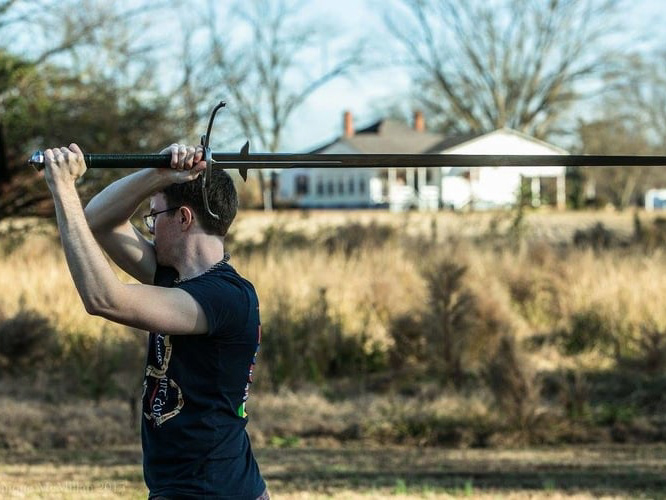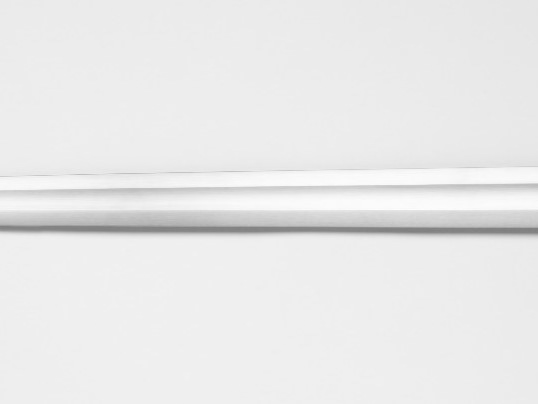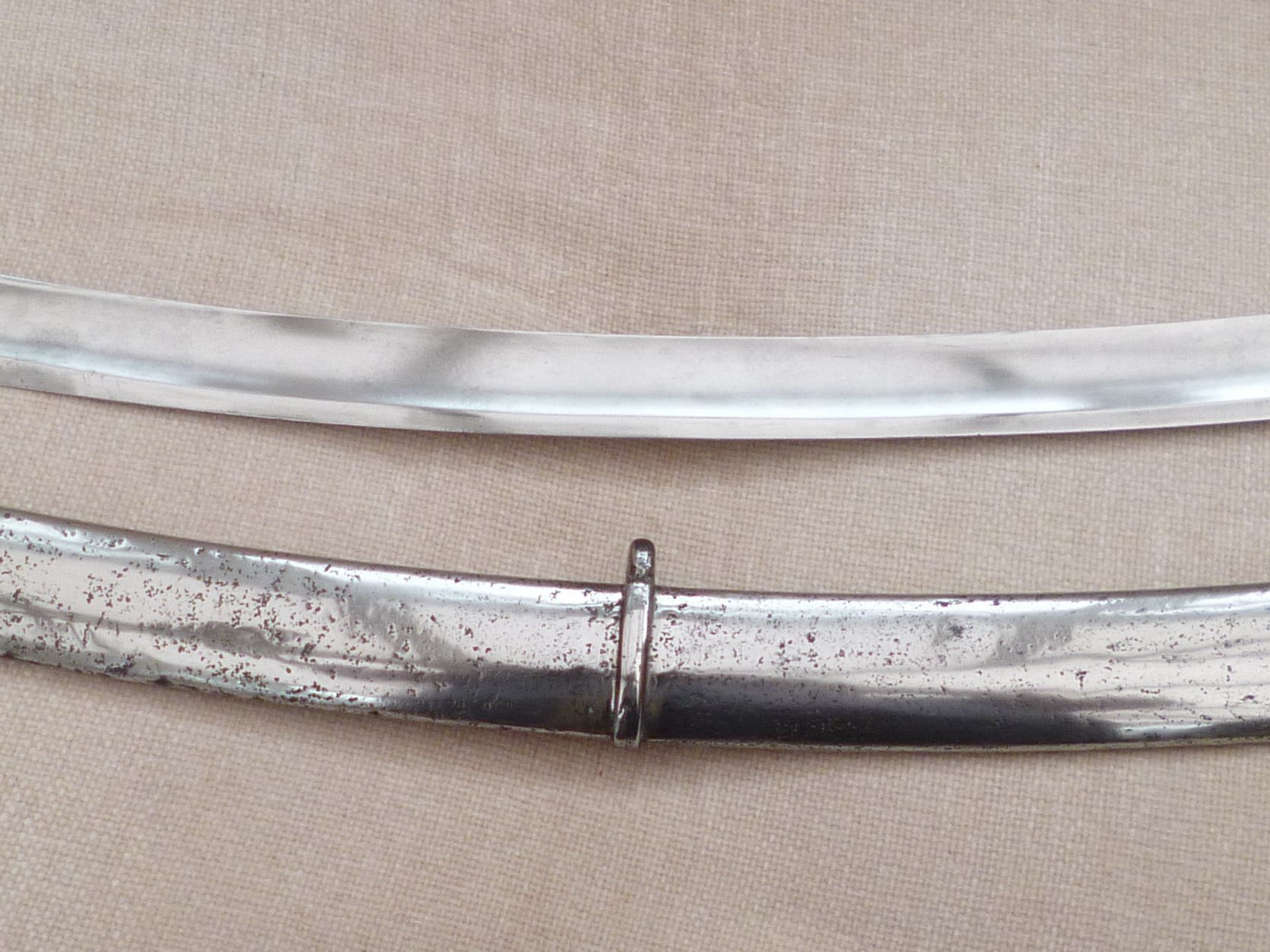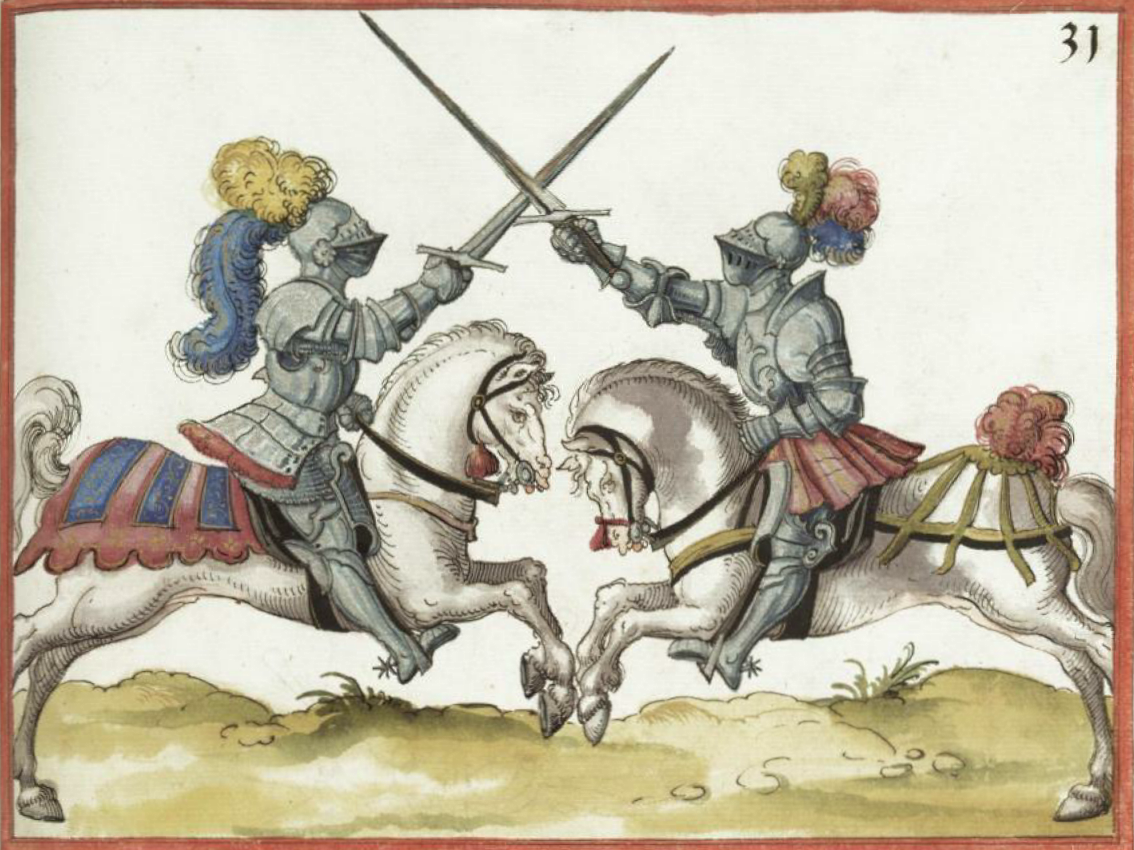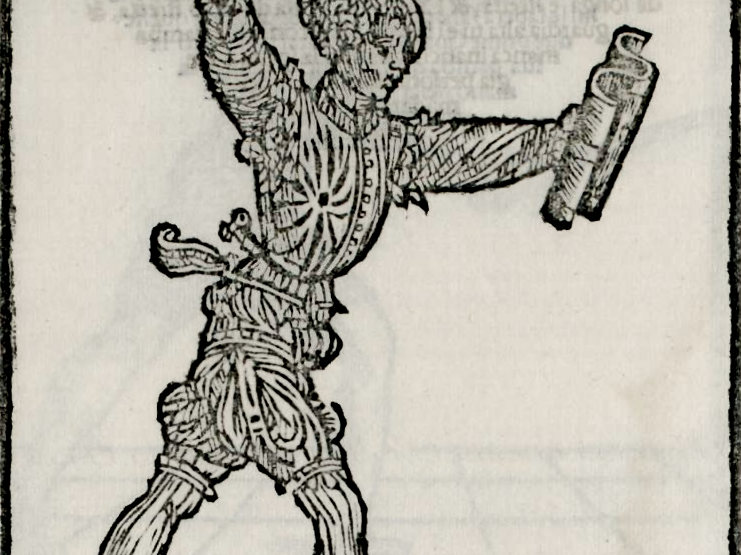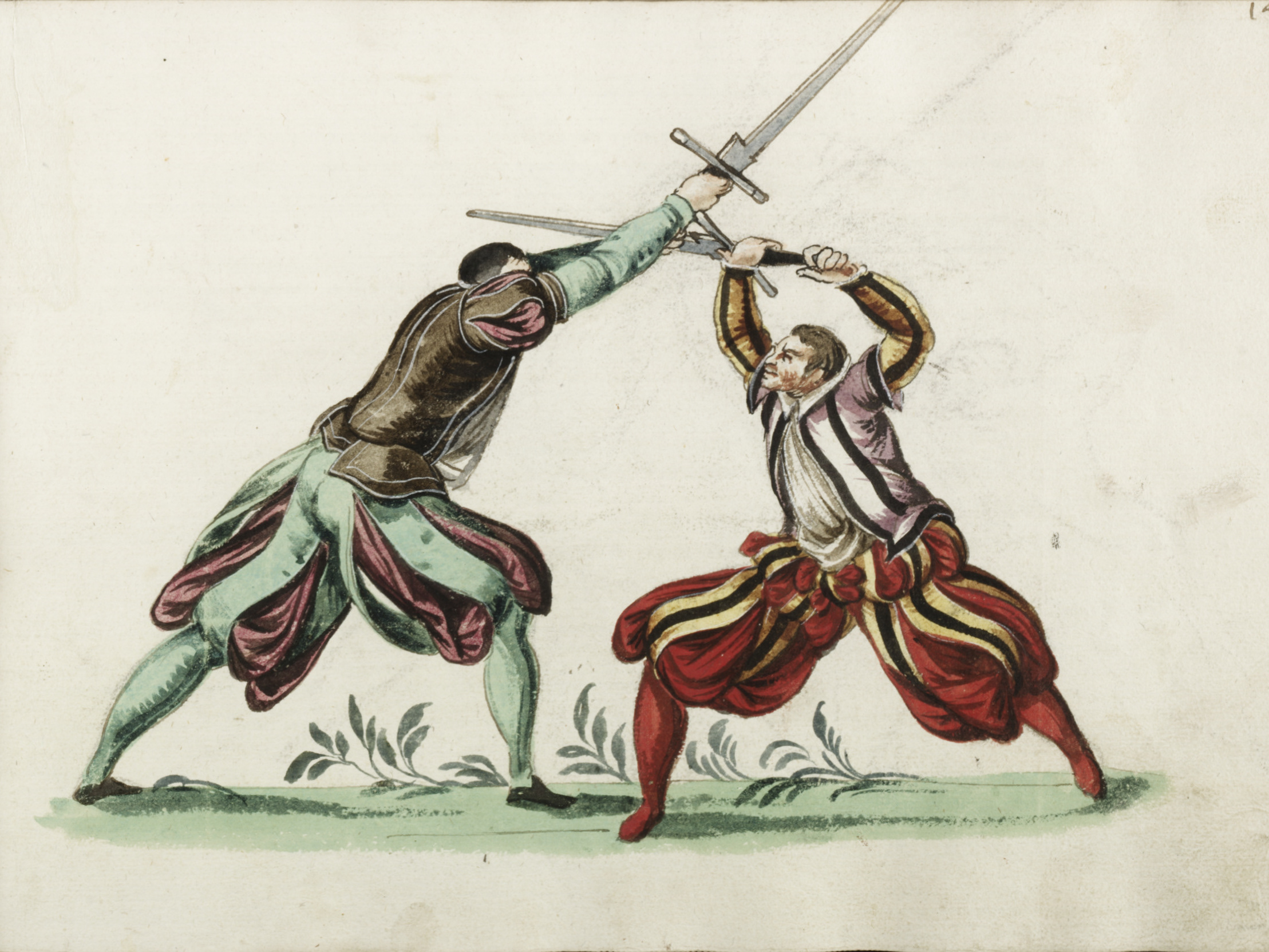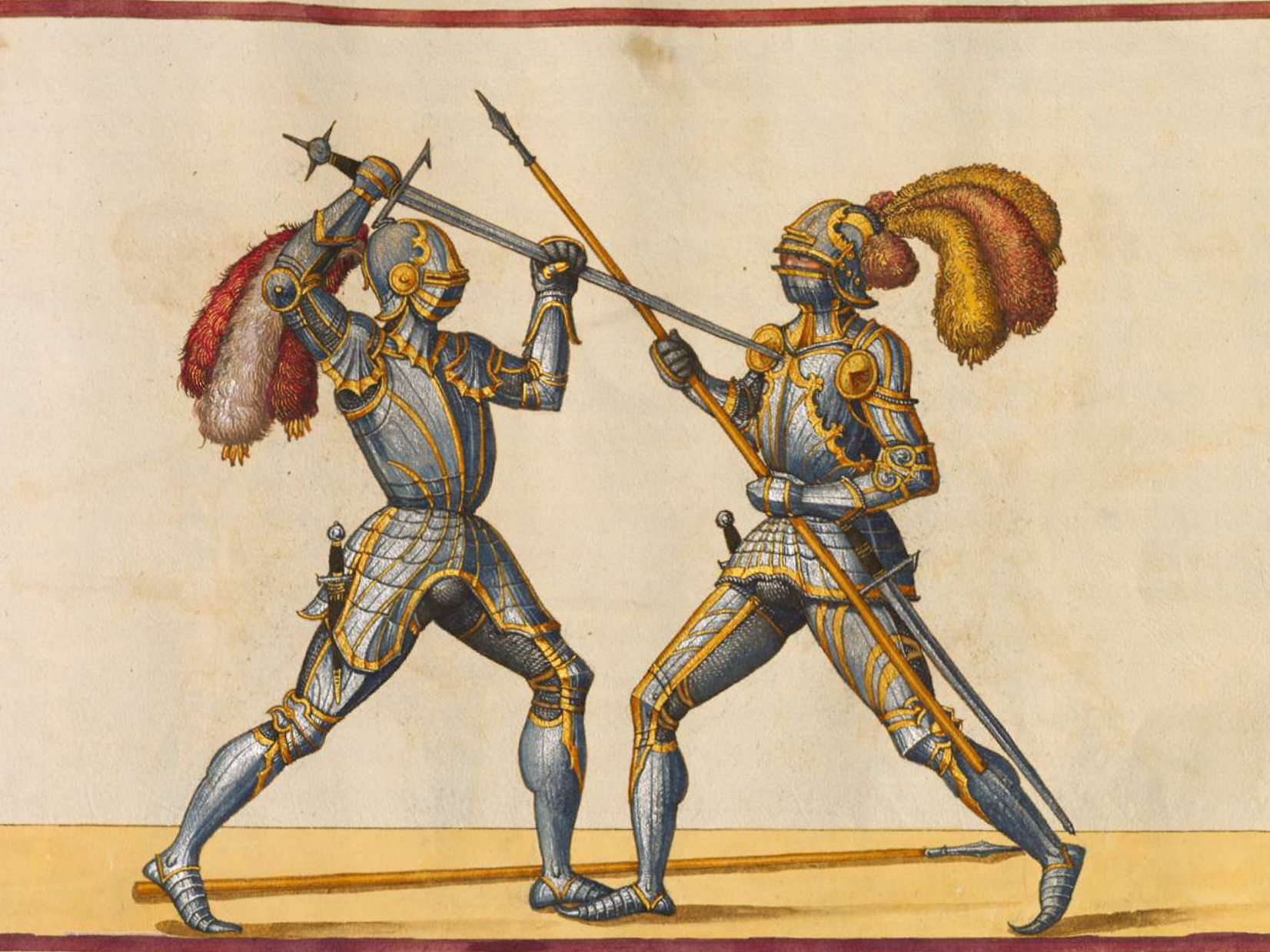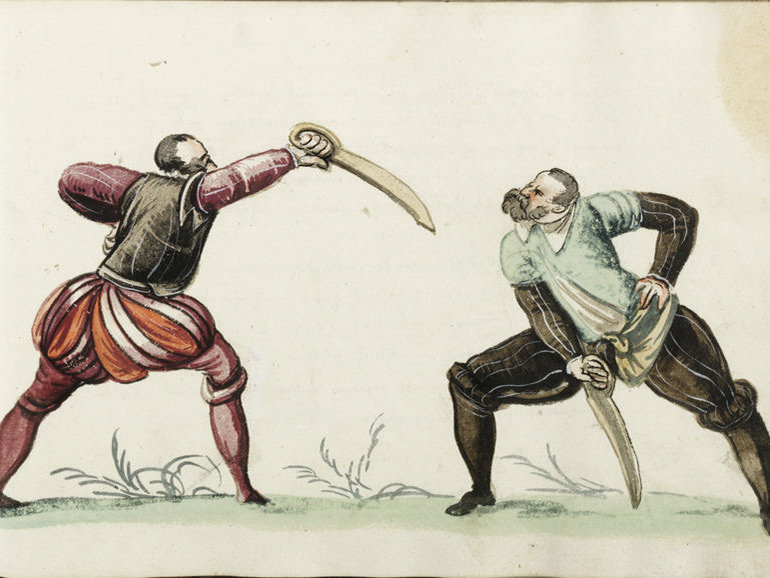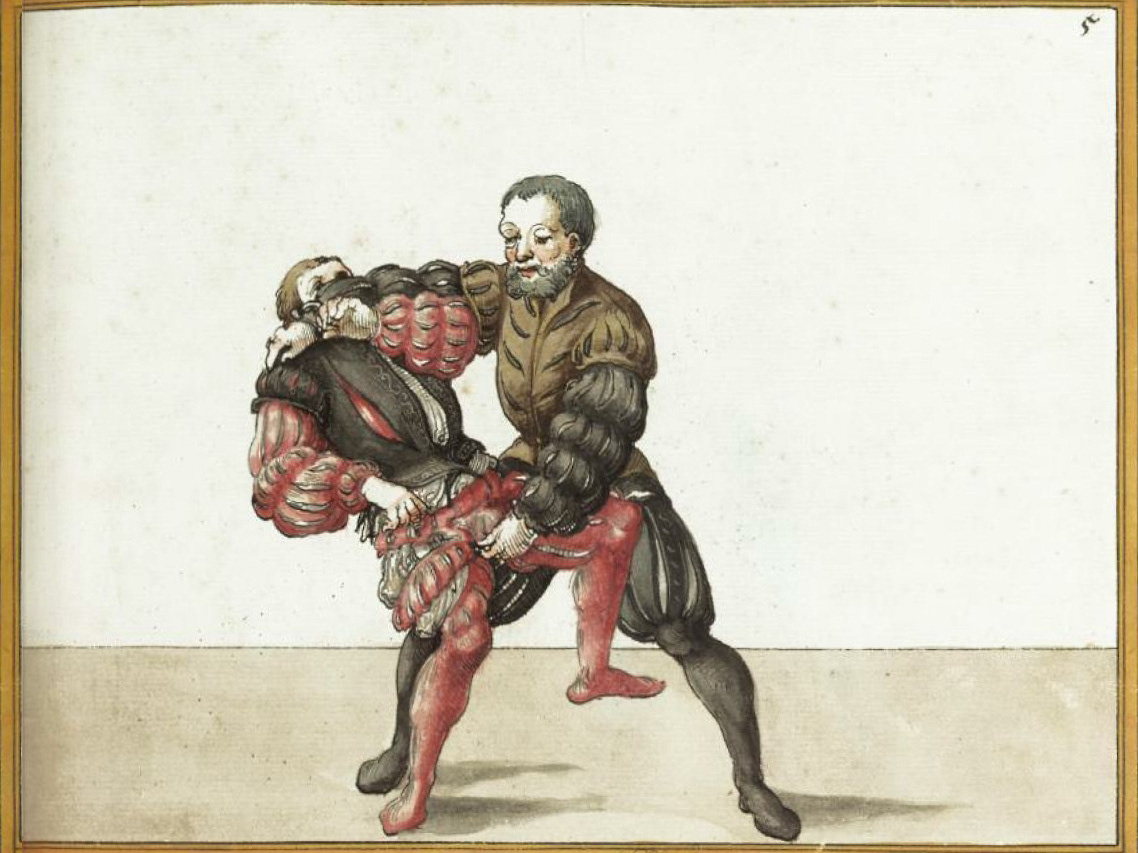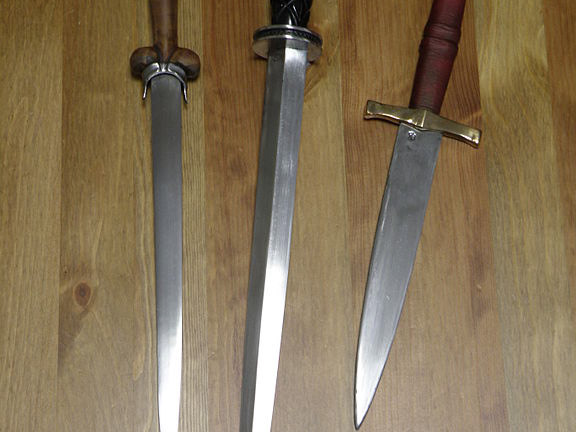Training weapons
The weapons used in HEMA depend on the style and system under study. A club studying medieval German combat might use longwords, messers, spears, and daggers; a Renaissance club might use montante, saber, and singlestick.
Generally, there are three categories of training weapons: synthetic, steel, and sharps.
Synthetic Weapons
Synthetic training weapons are made of nylon and have blunted tips, more flex in the blade, and rounded fittings to make them safer for sparring. Generally, these are stocked by clubs for use by new students, or they are used as a cheaper alternative to steel, as they require less equipment to use safely. Currently, Purpleheart Armory and South Coast Swords are the biggest distributors of synthetic trainers in the United States.
A synthetic arming sword with a wheel pommel.
Courtesy of Purpleheart Armory. All Rights Reserved.
Steel Weapons
Steel swords are made by forgers and swordsmiths. These are designed to replicate the weight, balance, flex, and performance of historical weapons. The cost can range anywhere from $200 to over $1000. Feders are steel longswords that are designed for sparring and have greater flex, thicker edges, and a point of balance closer to the hilt to reduce the force of impact. Blunt swords are sharp swords with no edge, they generally have thinner edges, less flex, and their weight distribution is optimized for cutting.
"The Alexandria", one of the most popular sharp longswords from Albion Swords.
Courtesy of Søren Niedziella.
Sword construction
Peter Johnsson from Albion swords is regarded as one of the best sword makers and scholars in the community. In this video, he shows how geometry is used to mathematically determine the perfect proportions of a sword.
This video shows how swords are made using historical tools and techniques.
Arms & Armor of the Oakshott Institute has written an informative article about the historical sword making process.
The main weapons studied by the community are the longsword, saber, sword and buckler, rapier, singlestick, dagger, messer, greatsword, pole weapons, sidesword, ringen, and other miscellaneous topics.
A note on naming: between fantasy role-playing games, videogames, movies, and books, naming swords can be contradictory and confusing. In general, if a one-handed sword only has one sharp edge, it is called a backsword. If its hilt has extra protection around the grip, then it can be called a complex hilt or basket hilt. For medieval swords, a specific naming system called the Oakeshott typology exists to classify swords based on their profile, cross-section, average blade length, fuller, point, grip, average weight, primary purpose, and period.[1]
Written by Nicholas Allen, founder and former head instructor of the VCU HEMA club.
Edited by Kiana Shurkin, xKDF
Works cited
Footnotes
[1] "Oakeshott's Typology Of The Medieval Sword", Albion-Swords.com, 2005, http://www.albion-swords.com/articles/oakeshott-typology.htm.
Citations
"Oakeshott's Typology Of The Medieval Sword". Albion-Swords.com, 2005. http://www.albion-swords.com/articles/oakeshott-typology.htm.
